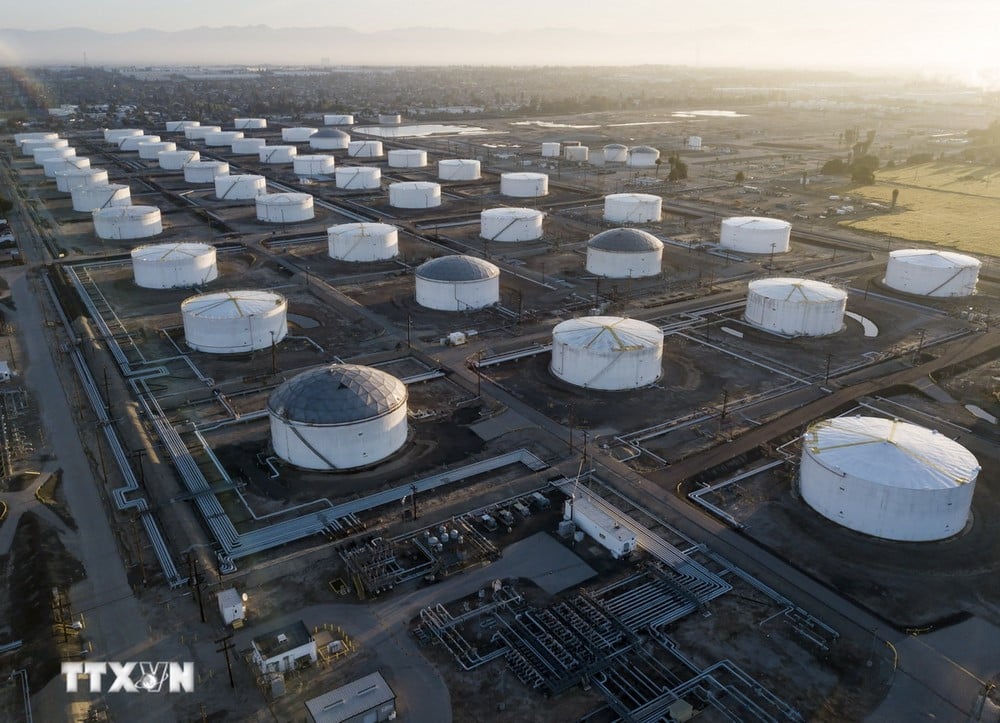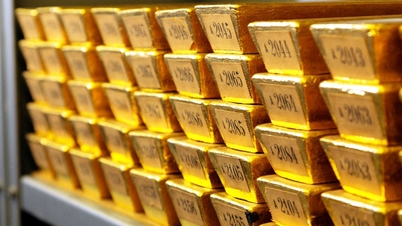
Gold prices rose on August 27th due to a weaker US dollar, as investors awaited inflation data that could provide insights into the size of the expected US interest rate cuts next month.
Spot gold rose 0.3% to $2,524.94 an ounce at 1:57 a.m. on August 28 (Vietnam time), slightly lower than the record high of $2,531.60 an ounce reached last week.
US gold futures fell 0.1% to $2,552.90 an ounce. The dollar index, which measures the greenback's strength against a basket of major currencies, fell 0.3% in the session, making gold more attractive to holders of other currencies.
Investors are now awaiting Personal Consumption Expenditures (PCE) data, a key inflation report and the US Federal Reserve's (Fed) preferred inflation measure.
The report is expected to be released this Friday (August 30).
The surprise of hotter-than-expected inflation data could have some impact on Fed policy, said Jim Wyckoff, senior market analyst at precious metals price website Kitco Metals.
But the central bank is certain to cut rates in September and could cut them again this year.
According to CME's FedWatch tool, traders see a 63.5% chance of a 25 basis point rate cut next month and about a 36.5% chance of a cut of up to 50 basis points.
Gold prices remained above the psychological level of $2,500 an ounce and were on track for their best year since 2020, largely thanks to market optimism about the outlook for upcoming US interest rates and persistent concerns about Middle East conflict.
In the market of other precious metals, spot silver price increased 0.6% to 30.07 USD/ounce, while platinum price decreased 0.1% to 960.90 USD/ounce.
In Vietnam, at the close of August 27, the price of SJC gold in the Hanoi market was listed by Saigon Jewelry Company at 79-81 million VND/tael (buy-sell).

Meanwhile, oil prices fell about 2% on August 27 due to concerns that slowing economic growth in the US and China could reduce energy demand, especially after prices rose more than 7% in the previous three days.
Brent crude futures fell $1.88, or 2.3 percent, to close at $79.55 a barrel. U.S. West Texas Intermediate (WTI) crude fell $1.89, or 2.4 percent, to $75.53 a barrel.
Analysts at energy consultancy Ritterbusch and Associates said in a note that while prices fell significantly on August 27, the decline was still within the normal and reasonable range of corrections after gains of up to $6 a barrel in the past three sessions.
Technical traders noted that prices of both contracts fell after failing to clear resistance around the 200-day moving average in the August 26 session.
In the US, consumer confidence rose to a six-month high in August 2024. But Americans are becoming more worried about the labor market after the unemployment rate jumped to a near three-year high of 4.3% last month.
That rise in unemployment has fueled expectations that the Fed will cut interest rates next month. Lower interest rates could boost economic growth and oil demand.
UBS Global Wealth Management has raised its forecast for a 25% chance of a US recession, up from 20% previously, citing weak numbers in the July jobs report.
Meanwhile, Goldman Sachs has lowered its 2025 average Brent price forecast by $5 a barrel, citing slowing demand in China. Specifically, the bank has cut the Brent trading band to $70-$85 a barrel and lowered its 2025 average Brent price forecast from $82 a barrel to $77 a barrel.
According to Goldman Sachs, concerns about the economy in the US and China have outweighed optimistic news from Libya and the Middle East - a factor that could reduce supply.
Oil prices have risen sharply in recent days due to the possibility of Libya shutting down oil fields, which could cut the OPEC member’s production by about 1.2 million barrels per day. Other tensions in the Middle East have also contributed to the price of “black gold” rising.
TB (according to VNA)Source: https://baohaiduong.vn/gia-vang-the-gioi-tiep-tuc-tang-gia-dau-giam-sau-ba-phien-tang-manh-391506.html






![[Photo] Closing Ceremony of the 10th Session of the 15th National Assembly](/_next/image?url=https%3A%2F%2Fvphoto.vietnam.vn%2Fthumb%2F1200x675%2Fvietnam%2Fresource%2FIMAGE%2F2025%2F12%2F11%2F1765448959967_image-1437-jpg.webp&w=3840&q=75)

























![[OFFICIAL] MISA GROUP ANNOUNCES ITS PIONEERING BRAND POSITIONING IN BUILDING AGENTIC AI FOR BUSINESSES, HOUSEHOLDS, AND THE GOVERNMENT](https://vphoto.vietnam.vn/thumb/402x226/vietnam/resource/IMAGE/2025/12/11/1765444754256_agentic-ai_postfb-scaled.png)







































































Comment (0)